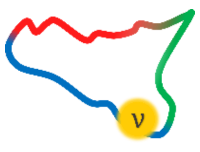Speaker
Description
Geometry-dependent performance evaluation of an HPGe detector is crucial for low-level $\gamma$-ray spectrometry, rare decay studies [Su, J., et al. 2014. NIM A, 763, 364–371], and environmental radioactivity assessments [Tarabini, E., et al. 2023. Appl. Radiat. Isot., 196, 110768]. In this study, the thickness of the top dead layer ($\textrm{t}_{\textrm{d}}$) of an HPGe detector was estimated using low-energy $\gamma$-rays, as the manufacturer did not specify this parameter. The investigations have been conducted on a newly installed coaxial p-type HPGe detector, GEM40P4-83-RB/ORTEC, encapsulated in a radiopure carbon fiber housing. To estimate $\textrm{t}_{\textrm{d}}$, Monte Carlo simulations have been performed using the GEANT4 framework of [Agostinelli, S., et al. 2003. NIM A, 506, 250–303]. It has been found to be 0.72 mm and 0.71 mm for the sharp corner geometry of the crystal using two different techniques and 0.67 mm for the round corner geometry, thereby accurately replicating the experimental results. Simulated and experimental efficiencies are in good agreement within the uncertainty of 2.5\% for close distances ($<$ 5 cm) and 3.8\% for far distances ($\ge$ 5 cm) across the energy range of 59.54–2614.50 keV. The methodology employed in this work has been validated by overlapping the simulated spectra with the experimental ones using different $\gamma$-sources (i.e., $^{109}$Cd, $^{137}$Cs, $^{60}$Co etc). The observed dead layer growth was consistent with initial expectations during the n+ lithium contact growth phase [Gilmore, G. 2008. Practical Gamma-Ray Spectrometry. John Wiley & Sons, New York, U.S.A.]. Thus, this model serves as a reliable tool for predicting dead layer evolution over time, enabling effective monitoring of detector performance degradation with aging.

